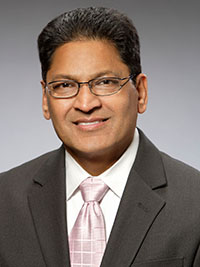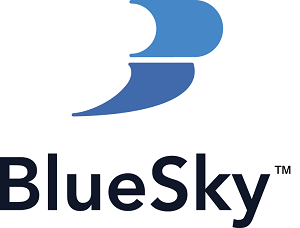How healthcare organizations are tackling workforce issues in real time
Hospitals and health systems all over the country are struggling to recruit and retain key personnel — leaving human resources (HR) to rely on contract agencies to fill critical gaps. While healthcare organizations have always relied on contract labor to some extent, the percentage of temporary employees manning hospital floors — as well as hospital back offices — are significantly climbing.
In fact, the American Hospital Association declared that rising labor expenses, driven by these staggering increases in contract labor, are putting the stability of American healthcare at risk.[1]
As a result, Jodie Wierzbicki, director at BlueSky Synergy, said that revenue cycle stakeholders are now tasked with managing a disruptive “paradigm shift” in hospital staffing. The increased use of contract labor — particularly contract nurses — has led to both operational and financial challenges in healthcare organizations.
Understanding the ongoing challenges with staffing
“It’s important to understand what hospitals are most concerned about when it comes to workforce management — and not only understand their ongoing challenges with staffing, but the different ways they are overcoming them,” she said.
BlueSky Synergy hosted a roundtable discussion to discuss these issues at the Healthcare Financial Management Association’s 2023 Annual Conference in Nashville, Tennessee. The event featured speakers from large urban health systems and those representing rural providers. The group discussed a range of workforce management issues, ranging from costs, candidate quality, contracting agencies and other issues that can impact a healthcare organization’s profitability.
When you hear “contract labor,” what are the first thoughts that come to mind?
Shay Atkins: The cost as well as the time it will take for someone to start. Will he or she be qualified? Will it be worth the cost, the ROI? Are we going to bring them in, take time to train them, and they won’t work out? But, most of all, the cost.
Mark George: The more pressing issue is the concern that we don’t have enough people to replace contract labor. We’re always looking to find qualified candidates to staff our departments and move away from contract labor. The bigger concern is finding qualified, full-time staff so you can reduce contract labor.
Janelle Nelson: If you really want to keep your culture and your retention and recruitment strong, you want to try to avoid contract labor.
David Schweer: We’re in a position where we have an increasing number of spaces, and it’s not just providers and nurses. Now, we can’t attract skilled labor in revenue cycle and other spaces. The supplier of labor, whether that’s an individual or firm, has the market power — and is driving up upgrades. These contractors don’t have the same level of engagement. They aren’t as invested in your organization. But you can’t run your operations without them.
Stephanie Fischer: One positive thing about contract labor is that there are some skill sets that require specific subject matter expertise that are hard to find. For example, we use actuaries and it’s harder to hire one than to contract one. So, I think there are examples where it makes sense — and it’s just easier — to contract for some roles.
Is the individual or the organization sourcing the individual the bigger challenge?
Atkins: I think it’s a combination of the two. The agency may be more focused on their profit margin than providing an individual that best fits the needs of an organization. They may not look for the best candidate who will follow your mission and values, but instead the best candidate they can place immediately.
Perry Patel: When you talk about these agencies, we know they just keep raising their profit margins. If you have an ability, and you have negotiation power, it might be worth asking some contractors if they would like to come on board as full-time employees. When you’re negotiating your agreement, you could have an exit clause that states that after so many months of services, they can become employees. They may not want to keep being thrown around.
What are the biggest pain points regarding staffing? What solutions are you employing to manage them?
Nelson: When we do our contracts, we also put in performance-based metrics and add in education. If [an agency is bringing contractors in], they need to help train the hires we bring on. That’s part of our contracting language. If you come in, you will also be mentoring and training on key concepts.
Carla Neiman: Expanding the use of travel staff has really wreaked havoc with our productivity analysis. I’m at a small hospital, and we don’t have all the advanced tools to build all the data in. Historically, productivity has come from our payroll system. Our contract staff is not in that system and so you lose that data — and they aren’t particularly productive because of the contractual arrangements. I’m currently in the process of trying to build that all into our productivity reporting just so we have some visibility into the impact of contract employees on our productivity, in clinical areas particularly.
George: The days of just bringing in an agency nurse and putting them on the floor are long gone. We have education; we have key performance indicators (KPIs); we have goals, and we have metrics they have to meet just like any other employee on our team. They need to be held accountable. And we have systems that are robust enough now where we can manage their productivity. We’ve put a much stronger focus on [the use of agency nurses] so we can make sure they are meeting our standards.
Patel: We did a study that showed that most of our employees were at the bottom of their pay grades. They didn’t need to be — and we were paying external people all this extra money and not taking care of our internal people. We did an entire analysis of our [more than] 21,000 employees and figured out how we could address [their] needs so we could make things more equitable.
Do your organizations have transparency into what fees you’re paying to secure contract labor?
Fischer: Before I started at the hospital, I placed interim management staffing. We developed a talent pool. We wrote all the contracts. My job was to maintain a certain margin, so regardless of how much the person was getting, we had to get that margin. No one knew what was going on behind the scenes.
Schweer: I always assume the agency is taking at least a third, if not more. If you talk to some of your staff, they’ll tell you how much they’re making. They aren’t always loyal to the agency. They are there for the money and not engagement. Sometimes, they’ll like your place and might ask if you are willing to match what they’re getting from the agency.
Nelson: There’s been a lot of excess rental car days and hotels. If you don’t have someone at your organization really monitoring what you were paying for, you might have to pay for those. Some places are fortunate enough to have contract oversight committees within their purchase service areas so they can monitor what’s happening and make sure they are putting in the right guardrails in our contracts.
George: We have a corporate office that tracks agency usage by site by pay period with rates; they know when contractors are coming off, when they are ending. What’s the impact? What’s the forecast? And we get notifications when rates are being reduced, which is nice.
Neiman: We use a vendor management company. They take a percentage, but they have a model contract everyone uses. Generally, the vendor will come back with some changes they want added in. But we’ve also seen vendors try to bypass that company because they don’t want to pay the percentage on the rates. Some of these traveler companies will go directly to a department manager and try to skirt the system.
Are there any technologies your organizations have considered to more effectively manage contract labor?
Atkins: There are times that we must use contract labor; however, we’ve been focusing on virtual registration to reduce the need. We’ve had great success in this area. It’s reduced our agency need and is helping with retention as well.
George: For us, it’s all about recruitment and retention. We are right across the river from New York City, and they have high rates. Our corporate human resources office sets scorecards and metrics. We look at those metrics and continue to see where we can make improvements.
Nelson: From the technology side, working virtually is an opportunity for hospitals. That’s worked well for some of our hospitals because it also addresses workforce housing shortages, which are present in a lot of states. If hospitals would adopt more virtual work, I think we’d have access to more knowledgeable team members. I’d also add that we have some hospitals that are working on bot development to automate more workflows. That provides staff with more desirable work, where they feel they’re contributing and not just doing repetitive tasks.
Schweer: We’re looking at telemedicine and what positions can be done remotely. In urban markets, there’s generally been more of a nursing ancillary need. But it’s situational depending on your market. But I’ve looked at doing telemedicine, which could save us $20 or $40 an hour and maybe also give us more flexible provider coverage.
Managing an evolving healthcare workforce
Wierzbicki said that she was struck by the fact that the panelists, who represented a range of different types of healthcare entities, were facing similar issues when it came to staffing and were looking for new technologies to help them mitigate the issues.
“Every successful large industry utilizes contingent, temporary labor when necessary — but they have to find ways to do so that works in a positive financial manner,” she said.
“Healthcare, too, has always used contract labor, including travel nurses or contract ancillary providers. However, we see that the challenge lies within the processes applied at hospitals to manage these contractors and the associated costs. By leveraging technology to solve for these challenges, and eliminate the contract agency middleman, hospitals can manage the workforce internally and see incredible benefits as a result.”
Panelists

SHAY ATKINS
Executive director of Patient Access at Wellstar Health System in Marietta, Georgia

STEPHANIE FISCHER
Director of Patient Innovation at Lehigh Valley Health Network in Allentown, Pennsylvania

MARK GEORGE
Director of Finance at RWJ Barnabas Health in Jersey City, New Jersey

CARLA NEIMAN
CFO at Clark Fork Valley Hospital in Plains, Montana

JANELLE NELSON
CEO at MIHA (Mountain Independent Hospital Alliance) in Valier, Montana

PERRY PATEL
CFO for the Fairfax County Community Services Board in Fairfax, Virginia

DAVID SCHWEER
Director of Finance at Mercy Siouxland Medical Center in Sioux City, Iowa

JODIE WIERZBICKI
Director at BlueSky Synergy in Nashville, Tennessee
About BlueSky
BlueSky pioneered the first healthcare-specific contract staffing software 20+ years ago and has continued to lead the industry with tools for the changing workforce landscape. Originally created as a partnership between a staffing agency and a health system, there’s something for everyone in an exceptionally configurable, surprisingly affordable BlueSky system. Our clients reduce reliance on staffing agencies while finding caregivers dedicated to patient care. Learn more at blueskysynergyfacilities.com
This published piece is provided solely for informational purposes. HFMA does not endorse the published material or warrant or guarantee its accuracy. The statements and opinions by participants are those of the participants and not those of HFMA. References to commercial manufacturers, vendors, products, or services that may appear do not constitute endorsements by HFMA.
[1]. “The Financial Stability of America’s Hospitals and Health Systems Is at Risk as the Costs of Caring Continue to Rise,” American Hospital Association, April 2023.






